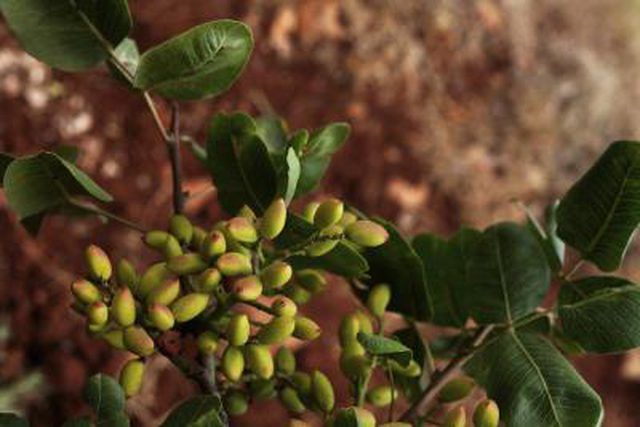Bulbs
Flower Basics
Flower Beds & Specialty Gardens
Flower Garden
Garden Furniture
Garden Gnomes
Garden Seeds
Garden Sheds
Garden Statues
Garden Tools & Supplies
Gardening Basics
Green & Organic
Groundcovers & Vines
Growing Annuals
Growing Basil
Growing Beans
Growing Berries
Growing Blueberries
Growing Cactus
Growing Corn
Growing Cotton
Growing Edibles
Growing Flowers
Growing Garlic
Growing Grapes
Growing Grass
Growing Herbs
Growing Jasmine
Growing Mint
Growing Mushrooms
Orchids
Growing Peanuts
Growing Perennials
Growing Plants
Growing Rosemary
Growing Roses
Growing Strawberries
Growing Sunflowers
Growing Thyme
Growing Tomatoes
Growing Tulips
Growing Vegetables
Herb Basics
Herb Garden
Indoor Growing
Landscaping Basics
Landscaping Patios
Landscaping Plants
Landscaping Shrubs
Landscaping Trees
Landscaping Walks & Pathways
Lawn Basics
Lawn Maintenance
Lawn Mowers
Lawn Ornaments
Lawn Planting
Lawn Tools
Outdoor Growing
Overall Landscape Planning
Pests, Weeds & Problems
Plant Basics
Rock Garden
Rose Garden
Shrubs
Soil
Specialty Gardens
Trees
Vegetable Garden
Yard Maintenance
How to Grow Pistachios
How to Grow Pistachios. Pistachio trees (Pistacia vera) don't require much extra care beyond regular, ample watering and pruning, particularly during the first few years after you plant them. Pistachios thrive in U.S. Department of Agriculture plant hardiness zones 4 through 9, and tolerate drought conditions and temperatures in excess of 100...

Pistachio trees (Pistacia vera) don't require much extra care beyond regular, ample watering and pruning, particularly during the first few years after you plant them. Pistachios thrive in U.S. Department of Agriculture plant hardiness zones 4 through 9, and tolerate drought conditions and temperatures in excess of 100 degrees Fahrenheit. If you plant your pistachios in deep, well-draining soil with a pH between 7.0 and 8.0, you can expect substantial harvests to begin about 10 years after planting.
Things You'll Need
Pruners
2 percent dormant oil
Rubbing alcohol
Multi-nutrient trace element spray
Manure
Organic pesticide spray
Bordeaux mixture
Irrigate each pistachio tree with about 10 gallons of water for every 1 inch of trunk width every two weeks; keep the trunk dry when watering. Maintain 4 feet of moisture penetration in the soil under the canopy throughout the growing season. If your area experiences an extended dry period, increase the watering frequency to once a week.
Trim the main shoots back to their first lateral shoots during dormancy. Leave the lateral shoots intact. Wipe the blades of your pruning tools with rubbing alcohol before you begin and between cuts.
Cut back crossed, damaged and diseased branches during dormancy. When pruning mature pistachio trees, leave a few of the vegetative buds that grow past the fruit buds intact. Fruit buds and vegetative buds have a similar appearance, but you can differentiate them by size -- fruit buds are larger than vegetative buds.
Check the pistachio branches for soft scale insects during dormancy. Treat soft scale insects, which resemble tiny gray-white bumps about the size of a pencil tip, by spraying 2 percent dormant oil on the branches. Spray enough to cover the entire plant, including the undersides of leaves.
Start spring cleaning as soon as the ground warms to about 65 degrees F. Pull weeds and remove debris from around the pistachio trees, and trim off any branches that show signs of disease. Wipe the pruners with alcohol before you star and between cuts so you won't spread anything, and destroy any affected trimmings or dispose of them in a sealed plastic garbage bag.
Spray pistachio trees in their first year of growth every three weeks with a multi-nutrient trace element spray containing copper, boron and zinc. Spray mature pistachio tree with a zinc foliar spray each year right before the first frost in fall and right after the last frost of the season in spring.
Fertilize each pistachio tree with 20 to 25 pounds of manure when the ground warms up to 65 degrees F in spring. Follow fertilization with watering to a depth of 4 feet.
Harvest pistachios in fall. Cover the ground under the canopy with a tarp or dropcloth to prevent the pistachios from coming in contact with the soil -- ripe pistachios fall from the branches when you agitate the tree.
Look for stinkbugs and leaf-footed plant bugs on the trees throughout the growing season. Leaf-footed plant bugs measure about 3/4 inch long and have yellow-brown bodies with a yellow band on their back; stinkbugs are shaped like a shield and range in color from grayish brown to green with yellow to green legs.
Spray pistachio trees affected by stinkbugs or leaf-footed plant bugs with an organic pesticide, such as one containing 1 percent insecticidal soap, 0.9 percent neem oil and 0.012 percent pyrethrine at the first sign of an infestation.
Examine the pistachio trees for alternaria late blight and septoria leaf spot during the growing season if you live in a humid area or have extended periods of heavy rainfall. Spray all the surfaces of the pistachio trees with Bordeaux mixture when the ground temperature reaches 65 degrees F and just before the first forecasted frost of the season in fall.
Tips & Warnings
Use only organic pesticides if you have a stinkbug or leaf-footed plant bug problem. Stinkbugs and leaf-footed plant bugs are common pistachio pests, but they have numerous natural predators. Chemical pesticides eradicate these pests but at the cost of killing beneficial insects, such as honeybees.